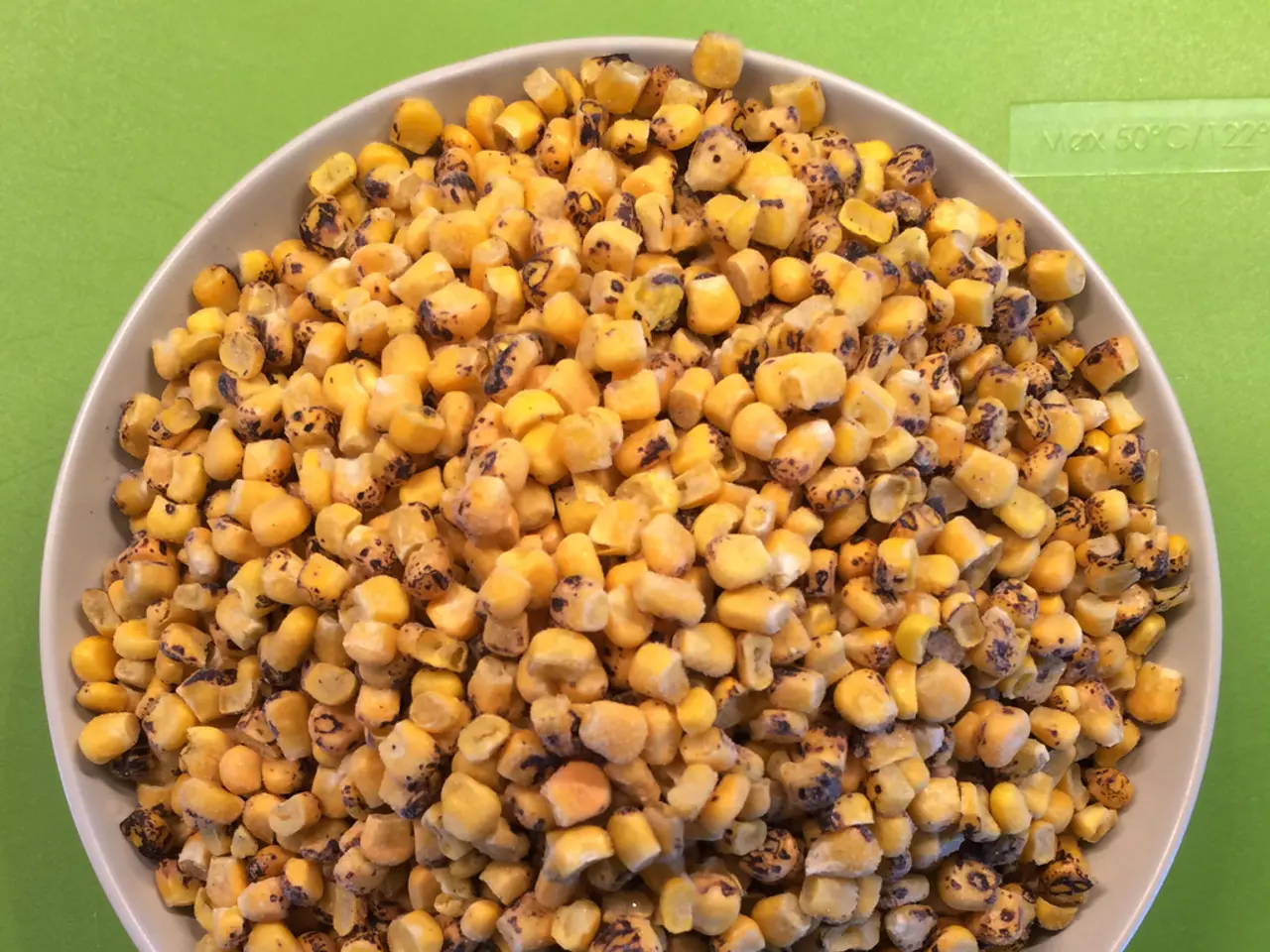Crop yields facing significant decreases in a heating world, even with adaptation efforts taken
In a groundbreaking study published in Nature, researchers have examined the projected impact of climate change on key staple crops, including maize, wheat, rice, sorghum, soybean, and cassava. The study, which uses data from 12,658 sub-national regions, provides valuable insights into how these crops may be affected under different warming scenarios and the role of adaptation measures in mitigating losses.
Agriculture is projected to be one of the industries hardest hit by the impacts of climate change. The study finds that under a moderate-emissions scenario, there is an overall decrease in staple crop yield of 8.3% in 2050 and 12.7% in 2098. However, the study also factors in adaptive measures that farmers may employ to adjust to the changing climate.
Maize and possibly rice are the most vulnerable to warming, with yields expected to decline with increasing warming. Under a low warming scenario (RCP2.6, less than 2°C increase), global maize yields may decrease by about 6%. In a high warming scenario (RCP8.5, 3°C to 5°C increase), the decline could be up to 24%. Maize is sensitive because it benefits little from CO₂ fertilization and is typically grown in warmer regions. Even cooler regions like Europe could see maize yield decreases up to 20%.
Contrary to maize, wheat yields are projected to increase globally due to the positive effect of carbon fertilization, which enhances photosynthesis and water-use efficiency for wheat. Cassava and sorghum, often cited as vulnerable, have shown yield improvements historically due to breeding and genetic engineering improving drought and pest resistance—forms of real adaptation. Their long-term yield impacts under warming scenarios are less pessimistic compared to modeling that ignores advances in crop genetics and farmer adaptations.
Global yields for soybean show increasing or stable trends in a majority of regions, benefiting from CO₂ fertilization and technological improvements in cultivation methods. Specific yield projections for rice under warming scenarios are not detailed explicitly in the provided results, but general assessments indicate that crop yields across major staples tend to decline with warming despite adaptation.
The study also considers adaptation measures such as improved fertilizer use, irrigation, genetic improvements, and better weather forecasting. However, these do not fully offset losses under high warming scenarios. Adaptation reduces but does not eliminate yield declines.
The world's "breadbaskets", such as the US and Europe, will have less adaptive capacity than poorer regions. Lower-income, tropical regions see more modest losses compared to the "breadbasket" regions. The study models the impacts on crop yields under two emissions scenarios - moderate (RCP4.5) and very high (RCP8.5) - for two time periods - 2050 and 2098.
Factoring in adaptation and income growth, the study finds that yield losses fall to 7.8% in 2050 and 11.2% in 2098 under moderate emissions. The study's method of linking global calories to changes in temperature is one of its key innovations, with a nearly linear decrease in global calorific output of 554 trillion kilocalories per 1°C of warming.
The study is considered an essential step towards better understanding adaptation in agriculture by a researcher not involved in the new study. This result is equivalent to about 120 kcal per person per day per 1°C, which is like a population giving up breakfast every day for a 3°C warmer future. Implementing adaptation could reduce total yield losses by around 12% by the end of the century. With adaptive measures, the yield decrease in Africa is reduced to 11.6%.
In conclusion, the study provides valuable insights into the impact of climate change on global crops and the role of adaptation measures in mitigating losses. While maize and possibly rice are the most vulnerable to warming, wheat and soybean may benefit from elevated CO₂ and adaptation. Cassava and sorghum show resilience due to genetic improvements. However, all crops face yield challenges under high warming, even when adaptive measures are employed.
- The study in Nature, focusing on climate change's impact on key crops, emphasizes the critical role of adaptation measures in mitigating losses, particularly in the agriculture industry.
- Maize and rice are identified as the most vulnerable to warming, with yields expected to decline under increasing warming scenarios, up to 24% in a high warming scenario.
- Contrasting maize, wheat yields are projected to increase globally due to carbon fertilization, while cassava and sorghum show yield improvements historically due to breeding and genetic engineering adaptations, with less pessimistic long-term yield impacts.
- The study considers various adaptation measures, such as improved fertilizer use, irrigation, genetic improvements, and better weather forecasting, but losses under high warming scenarios cannot be fully offset.
- Advanced regions like the US and Europe, often referred to as "breadbaskets," will have less adaptive capacity than poorer, tropical regions, which see more modest losses.
- The study's linked methodology between global calories and temperature changes is a key innovation, forecasting a nearly linear decrease in global calorific output of 554 trillion kilocalories per 1°C of warming. Despite these challenges, implementing adaptation could reduce total yield losses by around 12% by the end of the century.




